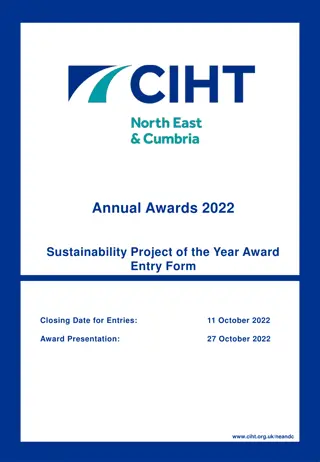
Secrets of Syrup Formulations: Sugar-Based vs. Sugar-Free, Storage Tips
Discover the pharmaceutical classifications of syrups, ranging from non-medicated to medicated variations. Uncover the benefits of sugar-based syrups over sugar-free alternatives and learn about the degradation pathways of sucrose. Explore the use of preservatives and the process of hydrolysis in syrup production. Find out how to store syrups effectively to prevent crystallization and mold growth.
Download Presentation

Please find below an Image/Link to download the presentation.
The content on the website is provided AS IS for your information and personal use only. It may not be sold, licensed, or shared on other websites without obtaining consent from the author. If you encounter any issues during the download, it is possible that the publisher has removed the file from their server.
You are allowed to download the files provided on this website for personal or commercial use, subject to the condition that they are used lawfully. All files are the property of their respective owners.
The content on the website is provided AS IS for your information and personal use only. It may not be sold, licensed, or shared on other websites without obtaining consent from the author.
E N D
Presentation Transcript
syrup Syrups: Are sweet, viscous aqueous liquids, they are concentrated aqueous preparations of sugar or sugar substitute with or without flavouring agents and medicinal substances. Medically they are divided into two types:- 1. Non medicated syrups:-(flavouring syrups): These syrups are intended to serve as pleasant tasting vehicles for medicinal substances (example cherry syrup, orange syrup, simple syrup.) 2. Medicated syrups:-These contain ingredients giving them therapeutic value. (E.g. Antitussive , antihistamines).
Pharmaceutical classification of syrups according to their basic formulation 1. Sugar based syrups: These are concentrated solutions of sugar (e.g. Sucrose ,dextrose). 2. Sugar free syrups: These are formulated with artificial sweetening agents.(e.g. sorbitol) The use of sucrose is preferred in the pharmaceutical preparation due to : A. It s purity B. Degree of sweetness C. Lack of color D. Ease of handling E. It s inertness.
Note : Sucrose subject to two degradative pathways: Fermentation Hydrolysis Fermentation of sucrose : Sucrose as carbohydrate in dilute solution provide nutrient media for the growth of micro- organisms.(Mold, yeasts) The steps of M.O. growth include: turbidity (change in colour) ,(change in odour) ,(change in taste). The concentration of sucrose is an important factor in inhibition of mold growth , the saturated solution of sucrose if stored properly will be self preserving (contain no free water ,thus they behave as anhydrous media with respect to growth of M.O and this will lead to shrinkage and lyses of M.O.
Preservatives which are suitable for use in syrups: benzoate, paraben, sorbic acid, mixture of methyl paraben and butyl paraben. In some syrups alcohol present in small amount (not more than 10%) which serve as solubilizing agent for alcohol soluble ingredient ,also alcohol concentrated by evaporation above the syrup and prevent the growth of surface molds.
Hydrolysis of sucrose Sucrose is disaccharide and can be hydrolysed to give monosaccharides (dextrose (glucose) , fructose(levulose) Invert sugars H+ The hydrolytic reaction is acid specific (i.e. hydrogen ion act as a catalyst)this reaction called inversion. The invert sugars (dextrose, fructose) have specific properties: They are fermented more easily than sucrose They are sweeter than sucrose Degradation of laevulose (which is formed by inversion )is responsible for brown color of some colourless syrups. This change called caramelization ,this phenomena is take place in syrup containing acids. Storage of syrup Generally syrups are stored at room temperature , in tightly stoppered well filled bottles ,saturation and refrigeration will inhibit both mould growth and inversion , but less than 4 C will cause crystallization (large crystals difficult to redisolved.)
Simple syrup B.P Rx Sucrose 667 g D.W Q.S 1000 g Method : 1. Weigh the beaker empty and weigh the sucrose in it 2. Add small quantity of water with stirring to dissolve the sucrose on gentle heating (using water bath). 3. Weigh again to complete the weigh by hot water Simple syrup U.S.P. Rx Sucrose 850 g D.W Q.S 1000 ml Methods : Prepare by using boiling water
Ipecac syrup Rx Ipecac fluid extracts 70 ml Glycerin 100 ml Simple syrup Q.S 1000 ml Sig f ss t.i.d p.c Method: Mix the fluid extract with glycerin then add enough syrup to make the product measure 1000 ml and mix thoroughly. Note : Ipecac used as expectorant in small dose (25 -100 mg) at larger dose it is used as emetic agent (vomiting occur within 30 min due irritation of GIT. Emetic dose in adult 10-30 ml ,in children 10 -15 ml. Tolu balsam syrup U.S.P Rx Tr.of tolu balsam 50 ml Mg carbonate 10 g Sucrose 820 g D.W Q.S 1000 ml Sig f ss p.r.n Method: 1.Mix tolu balsam tr.with 10 gm Mg carbonate and sucrose 60 g in a mortor. 2.Gradualy add 430 ml D.W with trituration and filter 3. Disslove the remainder of sucrose (760 g) in the clear filterate with gentle heating (not over 50 c) 4.Strain the syrup .while warm and add D.W through strainer to make product .mix thoroughly .
Notes Tolu balsam syrup used as expectorant , flavouring agent . Tolu balsam is soluble in alcohol , ether, chloroform but it is insoluble in water because it contain resins. Mg carbonate is very soluble in water and partially soluble in alcohol. Mg carbonate used as distributing agent for tolu balsam tr. Because it is alkaline and this help in dissolving the resinous content of the tolu balsam .


















